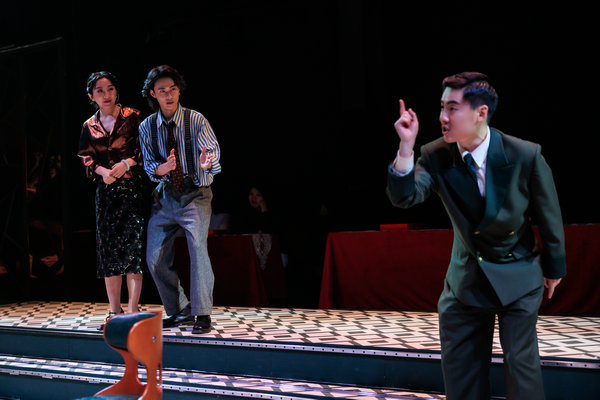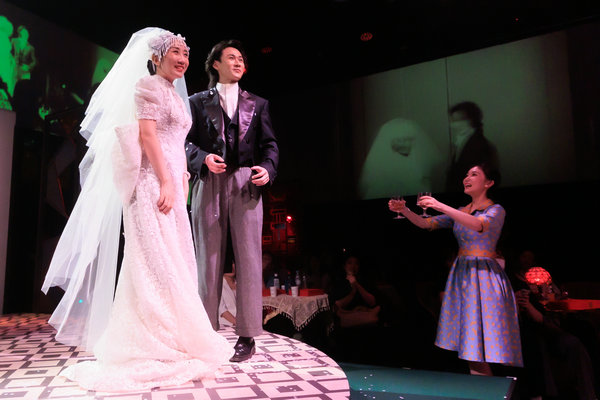Audience takes lead role in new-style play
Environmental theater uses performance approach for inclusive night of entertainment, Chen Nan reports.
By Chen Nan | China Daily | Updated: 2024-07-06 08:43

Imagine stepping into a world where reality blurs with fiction, where the boundaries of audience and performer dissolve and where every corner of the venue holds a piece of the unfolding narrative.
That is the captivating essence of environmental theater, a form of performance art that has captured the hearts and imaginations of young audiences worldwide.
On the night of June 26, a young Chinese audience was ready to watch the latest environmental theater production Fighting of Art produced by Star Theaters in Beijing.
Transformed from a traditional courtyard, Star Theaters is known for staging smaller and contemporary productions and has become a magnet for drama aficionados since it opened in 2009.
For the new production, Fighting of Art, one of Star Theaters' three auditoriums has been turned into a ballroom.

With a capacity of about 120 seats, audiences are invited to join a wedding, where the story begins.
Featuring five actors and actresses, Fighting of Art takes the audience back to the year 1948, a year before the founding of the People's Republic of China. The story revolves around a group of young people — members of the Communist Party of China, who use drama to encourage people to fight for the nation.
They also use drama to fight enemies and to accomplish their secret missions.
"Unlike traditional theater, where the stage is a distant platform and the audience remains seated, environmental theater invites participants to roam freely through intricately designed spaces, interacting with performers, exploring scenes from multiple angles, and becoming integral parts of the story themselves," says director Xue Senyu."At its core, environmental theater transforms the traditional theater setting into a playground of possibilities."
Xue notes that the script of Fighting of Art has been revised for more than a year. Unlike traditional scripts, which rely on fixed staging and audience perspective, environmental theater scripts must account for the interactive nature of the performance. The script has to create pathways that allow for multiple audience participants, ensuring that each participant's experience remains cohesive and compelling while offering opportunities for exploration and discovery.
The creative team of Fighting of Art has used elements of jubensha, which is a role-playing murder mystery game popular among young Chinese people.
"This production appeals particularly to young audiences who crave experiences that are not only visually and emotionally stimulating but also interactive and participatory," Xue says.
























